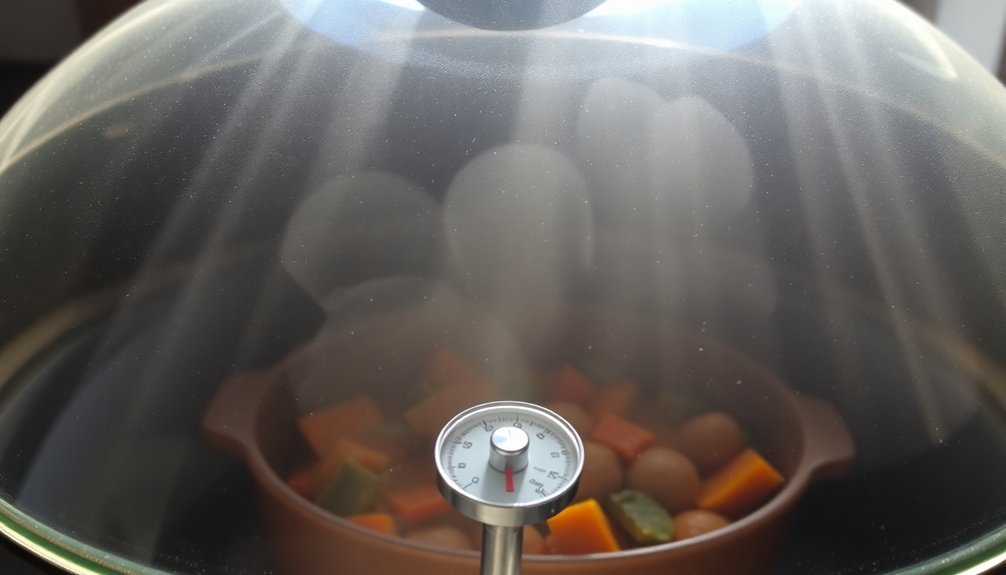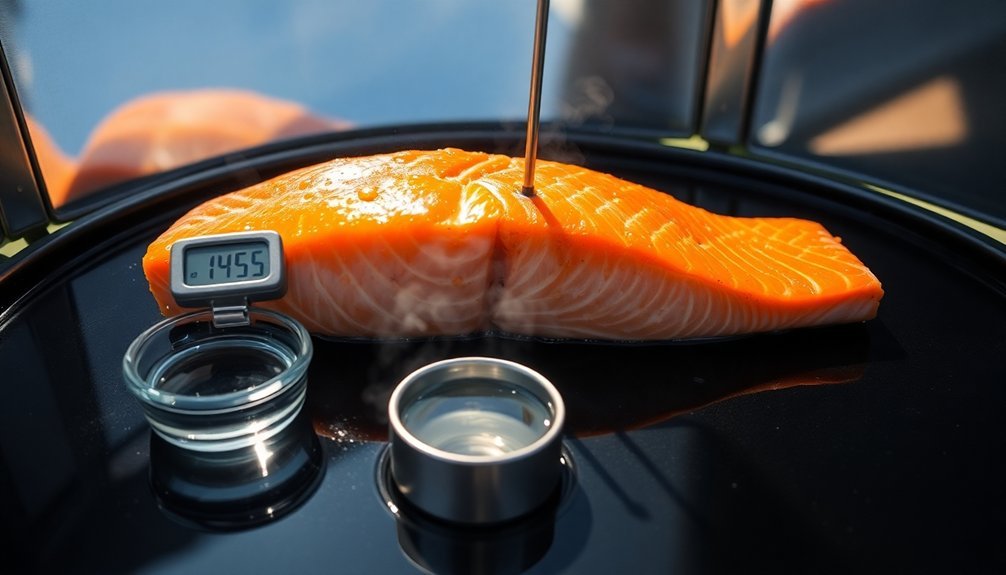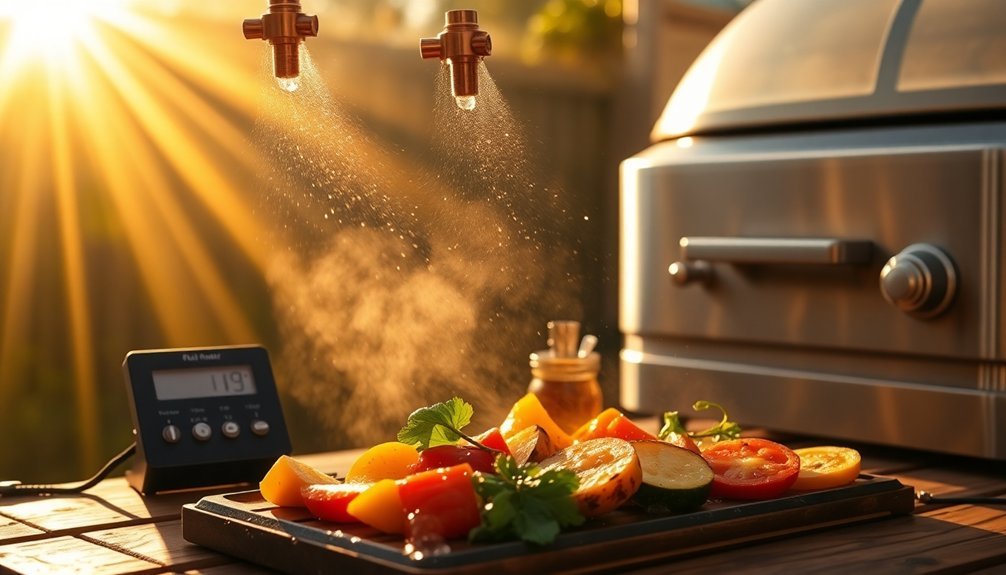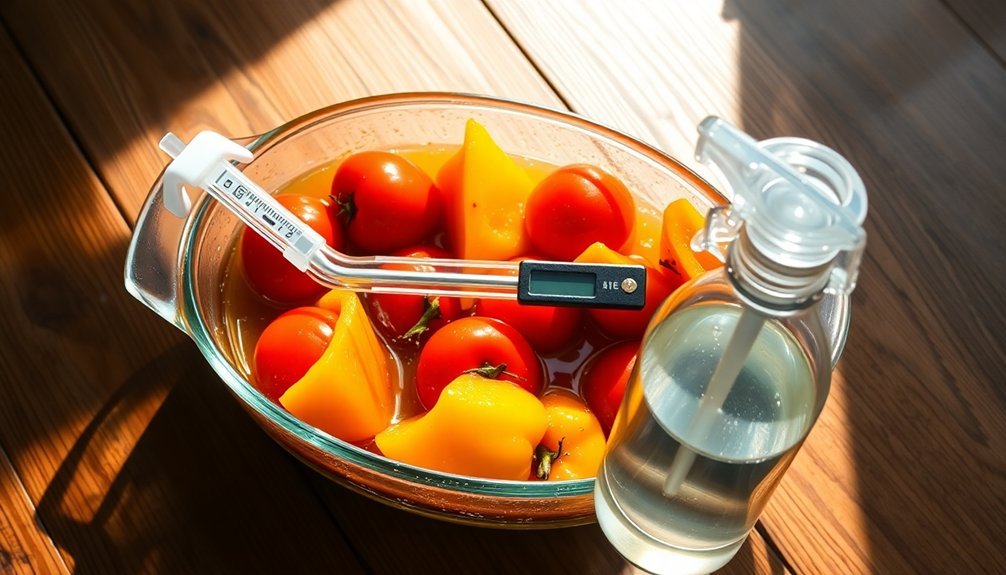Control moisture effectively in your sun-baked meals by starting with proper ventilation through strategic lid placement and steam release points. You'll want to choose dark, moisture-retaining cookware while monitoring local humidity levels that affect cooking times. Verify your solar oven maintains consistent temperatures between 300-350°F by adjusting its position every 30 minutes, and line the interior with newspaper for balanced moisture distribution. Don't forget to preheat in direct sunlight before adding food, and keep reflective surfaces clean for peak performance. These foundational techniques will open your path to perfectly moist, flavorful solar-cooked dishes.
Strategic Venting Techniques

While proper ventilation plays an essential role in preserving sun-baked meals, many home cooks don't take full advantage of their kitchen's ventilation systems.
Despite 90% of homes having mechanical ventilation devices, only 30% use them regularly.
You'll get the best results by combining multiple ventilation methods. Start by using your range hood, especially if it's vented outdoors and has multiple speed settings.
Open your kitchen windows to double the removal rate of fine particles. For peak moisture control, position overhead fans in adjacent rooms to improve air circulation.
If you're dealing with excess moisture, use external-venting fans and guarantee proper airflow around your sun-baked dishes. Keep in mind that cold-packed meals from delivery services like Sunbasket require proper ventilation when being prepared.
Smart Material Choices
Because the right materials can make or break your sun-baked meals, selecting quality ingredients and appropriate cooking vessels is essential.
Choose USDA-certified organic produce, responsibly raised meats, and sustainable seafood to guarantee peak nutrition and flavor in your dishes. Like popular service Sunbasket, focus on fresh organic ingredients for best results.
For cooking vessels, you'll want heat-resistant, oven-safe containers with non-stick properties. These materials prevent food from sticking while maintaining even heat distribution during the sun-baking process.
Opt for eco-friendly, durable packaging that protects your ingredients while minimizing environmental impact.
You don't need fancy equipment to create delicious sun-baked meals. Stock your kitchen with basics like kosher salt, pepper, and olive oil.
Keep essential tools such as mixing bowls and sheet pans handy, and you'll be ready to create perfect sun-baked dishes every time.
Temperature and Time Control

Since mastering temperature control is crucial for sun-baked cooking success, you'll need to understand how solar ovens operate within specific ranges. Your Sun Oven can reach 360-400°F on bright days, though you'll typically bake between 300-350°F. Expect lower temperatures of 250-300°F during cloudy conditions.
To maintain ideal heat, you'll need to refocus your oven every 30 minutes, especially during noon hours when the sun moves quickly. The built-in leveling leg helps you track and adjust efficiently.
You can expect preheating to 225°F within 15 minutes, reaching 325°F shortly after. When properly aligned, cooking times mirror conventional ovens – for instance, an 8-pound turkey breast takes about 2 hours at 325°F. The Sun Oven's even temperature rise ensures your food stays moist without shrinking.
Monitor your oven's temperature gauge regularly to guarantee consistent cooking conditions.
Essential Equipment Setup
Before assembling your solar oven, you'll need several key components to guarantee ideal heat absorption and retention.
Start by securing aluminum foil to the exterior surfaces, positioning it to reflect maximum sunlight into the oven's opening. You'll want to line the interior with newspaper for insulation, and add black construction paper at the bottom to absorb heat effectively.
Cover your oven's opening with clear plastic wrap or a glass lid, ensuring it's tightly sealed to trap heat inside. Don't forget to use a dark-colored pot for better heat absorption.
Install a thermometer to monitor internal temperatures, and add a leveling rack to keep your cooking vessel stable.
Remember to maintain clean reflective surfaces and transparent covers, adjusting the oven's position as the sun moves across the sky.
Weather Pattern Management

When cooking with a solar oven, weather patterns play a crucial role in your meal's success. You'll need to watch humidity levels closely, as high humidity can speed up cooking times by trapping moisture at the food's surface, while low humidity causes faster evaporation and slower cooking.
Monitor your local temperature fluctuations carefully. On hot days, you'll find your dishes cook more quickly, requiring frequent checks to prevent overcooking.
During cooler weather, expect longer cooking times and consider adjusting your recipes accordingly. Don't forget to track sun exposure – you'll need to realign your solar oven periodically to maintain ideal cooking temperatures.
Use dark-colored metal pans to enhance heat absorption, and always preheat your oven in direct sunlight before adding food.
Frequently Asked Questions
Can Sun-Dried Foods Be Safely Stored Without Refrigeration?
You can safely store sun-dried foods without refrigeration in cool, dark places below 60°F with low humidity. Just make certain they're properly dried, pasteurized, and sealed in airtight containers to prevent moisture absorption.
How Do Different Food Textures Affect Drying Time in Solar Ovens?
You'll find that denser foods like meat take the longest to dry, while herbs dry quickly. Your fruits and vegetables fall in between, with their drying time depending on water content and slice thickness.
What Signs Indicate Food Has Reached Optimal Dryness?
You'll know food's properly dried when it's leathery but not hard, falls apart after squeezing, shows no moisture when cut, and feels suede-like for fruits. Vegetables should be brittle or tough.
Are Plastic Containers Safe for Solar Oven Moisture Collection?
You can safely use food-grade plastic containers for solar oven moisture collection. Just verify they're BPA-free, heat-resistant, and properly sanitized. Always check manufacturer guidelines and avoid containers with toxic additives.
How Does Altitude Affect Moisture Control in Solar Cooking?
At higher altitudes, you'll need to add more liquid since moisture evaporates faster. Plan for 10-25% extra water depending on elevation, and keep your food tightly covered to maintain consistent cooking conditions.
In Summary
You'll master sun-baked cooking by combining these five moisture management strategies. Monitor your local weather patterns, choose appropriate cookware materials, and perfect your venting techniques. Don't forget to maintain precise temperature control and set up your equipment correctly. With practice and attention to these moisture-balancing tips, you're ready to create perfectly cooked solar meals that are neither dried out nor soggy.





Leave a Reply